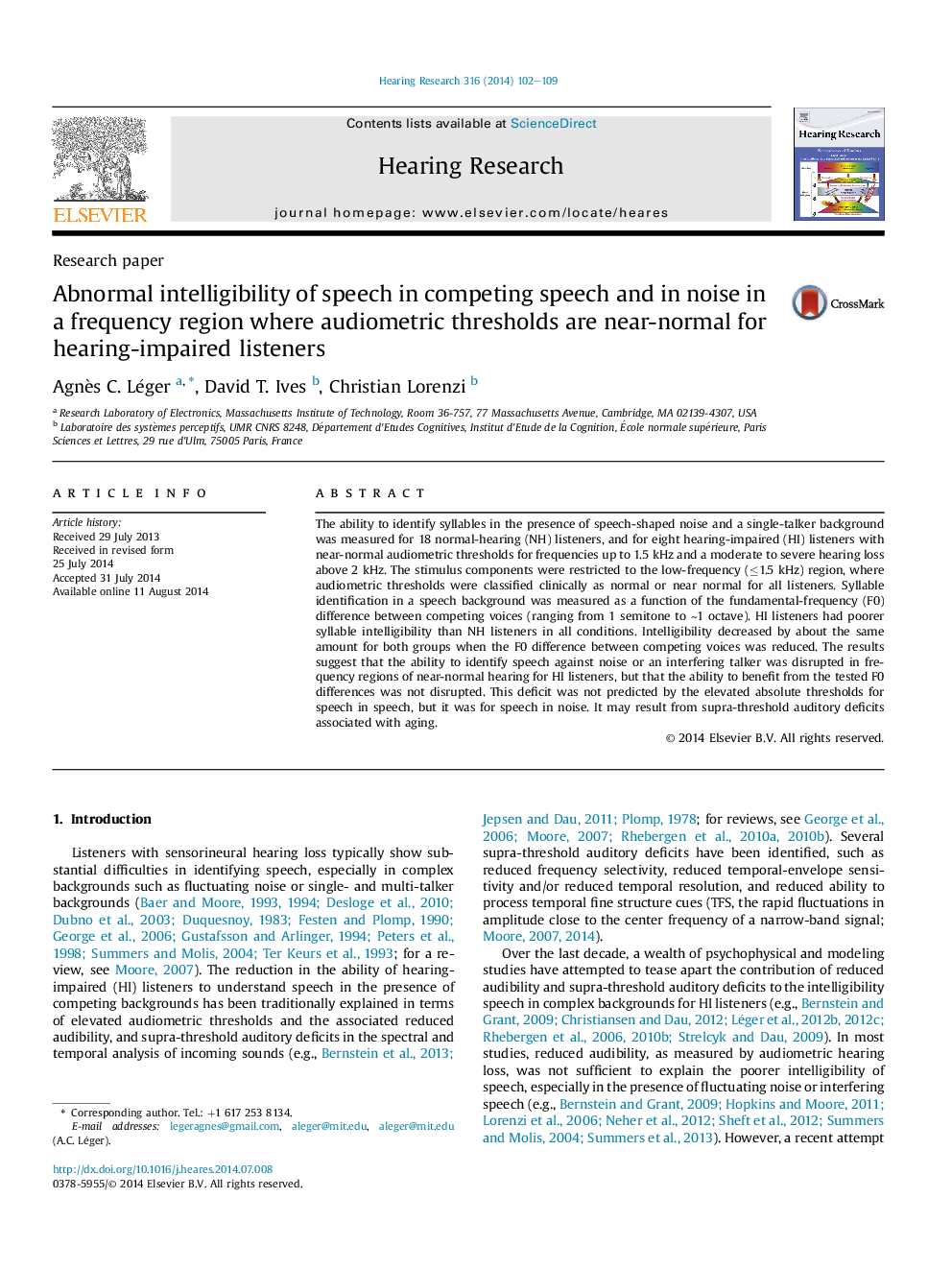| Article ID | Journal | Published Year | Pages | File Type |
|---|---|---|---|---|
| 6287425 | Hearing Research | 2014 | 8 Pages |
Abstract
The ability to identify syllables in the presence of speech-shaped noise and a single-talker background was measured for 18 normal-hearing (NH) listeners, and for eight hearing-impaired (HI) listeners with near-normal audiometric thresholds for frequencies up to 1.5 kHz and a moderate to severe hearing loss above 2 kHz. The stimulus components were restricted to the low-frequency (â¤1.5 kHz) region, where audiometric thresholds were classified clinically as normal or near normal for all listeners. Syllable identification in a speech background was measured as a function of the fundamental-frequency (F0) difference between competing voices (ranging from 1 semitone to â¼1 octave). HI listeners had poorer syllable intelligibility than NH listeners in all conditions. Intelligibility decreased by about the same amount for both groups when the F0 difference between competing voices was reduced. The results suggest that the ability to identify speech against noise or an interfering talker was disrupted in frequency regions of near-normal hearing for HI listeners, but that the ability to benefit from the tested F0 differences was not disrupted. This deficit was not predicted by the elevated absolute thresholds for speech in speech, but it was for speech in noise. It may result from supra-threshold auditory deficits associated with aging.
Related Topics
Life Sciences
Neuroscience
Sensory Systems
Authors
Agnès C. Léger, David T. Ives, Christian Lorenzi,
